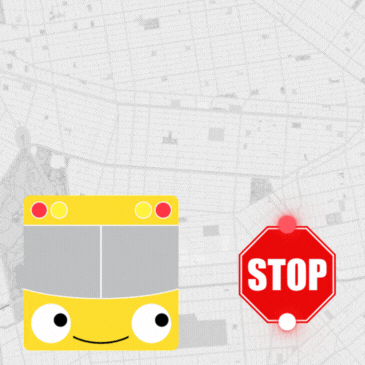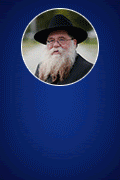
Experiencing the Siberian Jewish Renaissance
A great deal has been researched, written and documented concerning the Jews of Russia during the last century of their collective experience, throughout the Soviet era and beyond. Most attention is understandably devoted to the Jewries of Moscow, St. Petersburg, and western regions (known in the Czarist era as the Pale of Settlement). Relatively little is said, however, about Jews living further to the east, in central Siberia. Having just returned from a summer residence in Siberia’s capital, Novosibirsk, the third largest city in Russia, I was surprised to find a vibrant Jewish community center that I was privileged to address, and a new synagogue on the rise. From several members of the community, including the director of the JCC, I was able to piece together their story.
The Jewish population of Novosibirsk is roughly 25,000, out of a total municipal population of some two million. Though it amounts to a scant 1.25 percent of the citizenry, it is still healthy enough, and surprisingly integrated. We must bear in mind that during the seven decades of Soviet rule, expressions of religion were officially suppressed, and private houses of worship were closed. There was a systematic attempt to quash Jewish identity. Those who sought to emigrate to Israel were refused (hence the term “refusnik”) and even imprisoned (such as Zionist and human rights activist Natan/Anatoly Sharansky). Studying the Hebrew language was illegal.
With the fall of the Soviet Union, religious expression in Russia did resurface. The only synagogue in Novosibirsk reopened. Rabbi Shneur Salmon Zaklos arrived in the city in 1999 as an emissary from Chabad-Lubavitch, to take the long-vacant post of community rabbi. Within days of his arrival, however, the community suffered what could only be described as a pogrom. On Purim the synagogue was attacked and vandalized. Scrolls of the Torah and prayer books were torn shredded and trampled. Furniture was destroyed, and Nazi graffiti was sprayed on the walls.
The systematic repression of the Soviet era may have ended, but in its wake came a return to “old-style” persecution. The long, silent, Soviet pogroms have once again given way to loud, violent ones. The Jewish spirit, however, could not be trampled. A concerted effort was undertaken to restore and rebuild. The result can only be described as a Jewish renaissance in Siberia. The old synagogue was so badly damaged by the hooligans that it was deemed beyond repair, so the congregation rented temporary facilities in the city center. With the help of the Federation of Jewish Communities of Russia, and “Or Avner” Foundation, a spectacular new synagogue (in which I was privileged to join in Shabbat services) began going up. Only blocks from Lenin Square, where a giant statue of the patriarch of Bolshevism still stands sentinel over the city center, the yet unfinished structure is congregational home to some 500 families.
Although the JCC director does not know Hebrew, she explained that classes are offered in Judaism, and the newly legal Hebrew language. There is now an active Jewish educational system, including a Sunday school, two nursery schools, a full-curriculum elementary school and a full-curriculum high school. In Novosibirsk today, the tradition of tzedakah is also alive and well. The community provides hot meals daily to 30 people, and thousands of food packages are distributed to the needy. A team of doctors provides free medical care to those in need, and a special fund assists others in obtaining medicinal drugs. Financial allotments are also sent to impoverished families.
While the pogrom of 1999 has begun to fade from memory, anti-Semitism is by no means a thing of the past. During the initial phases of the new synagogue’s construction, in October 2002, criminal elements turned their automatic weapons on the building, breaking glass and striking the walls, with construction workers inside. Though no one was injured, the incident was a reminder that old ways die hard in Russia. At the close of Shabbat services, a schoolteacher related to me that when she came to her classroom recently, she found that one of the pupils had drawn a big Star of David on the chalkboard, with sinister implication.
In my address to the JCC (which my Russian-born wife consecutively translated), I described the lively and growing Judaic Studies program at the University of Central Florida, and the significant interest in all of our courses, from Hebrew language to the tenets of Judaism, to a broad range of historical and literary topics, and of course the Holocaust.
I stressed that our students come from a variety of backgrounds, non-Jewish as well as Jewish, evincing serious interest in Judaica, the Jewish people, and the state of Israel in various segments of the American population. When I mentioned that I teach a course on modern Israeli culture, attended by many non-Jews, the audience was full of questions. No longer wanting to talk about themselves, they showed overwhelming concern for the modern Jewish state, and began querying me on American policy toward the Middle East. Does America still stand with Israel? Will the United States continue to support the Jewish state in the face of the existential threats posed by the region? I could only relate that I shared their concerns, and their nervousness about what the future holds.
But the fact that Novosibirsk, Siberia, which now has regular airline service to Tel Aviv, boasts such a community was to me more than encouraging. It is a testimony to the Jewish neshamah, eternally bound to its sacred traditions and to the land of Israel. As I boarded the Trans-Siberian Railroad to make the long journey to St. Petersburg, and on to Moscow, I could only mutter to myself, “Yasher koach!”
Kenneth L. Hanson is an associate professor in the University of Central Florida Judaic Studies Program.













